Introduction:
Fungal acne is a frustrating condition that can leave you feeling helpless when it comes to managing your skin. It can easily be mistaken for regular acne, which makes it tricky to treat.
But don’t worry! With the right fungal acne skincare routine, you can regain smooth and clear skin. In this guide, we’ll help you understand what fungal acne is, how to identify it, and provide actionable steps to build a skincare routine that’s both effective and budget-friendly.
Whether you’re new to fungal acne or seeking better solutions, this post will give you the tools you need to feel confident in managing your skin.
Table of Contents
What Is Fungal Acne?
Fungal acne, medically known as Malassezia folliculitis, is a skin condition caused by an overgrowth of yeast (specifically, Malassezia species) within the hair follicles. This overgrowth leads to inflammation and the appearance of small, itchy, acne-like bumps on the skin.
It’s different from traditional acne because it’s not caused by clogged pores or bacteria, but by a type of yeast called Malassezia, which thrives in oily and warm environments. While it’s often called fungal acne, it doesn’t present itself in the same way as regular acne does.
Key Characteristics:
1. Itchy Bumps: Unlike regular acne, which can be painful or inflamed, fungal acne tends to cause itching.
2. Appearance: The bumps are often uniform in size and tend to appear in clusters, typically on the forehead, back, chest, or shoulders.
3. Non-inflammatory: Fungal acne is generally less inflamed than typical acne, making it appear as small, white or flesh-colored bumps.
Fungal acne tends to develop in areas where the skin is oily and prone to sweating. This is why you’ll often see it crop up in warmer climates or during periods of physical activity, like after a workout.
How Can You Tell If Your Acne Is Fungal?
It can be tough to differentiate between regular acne and fungal acne skincare routine, especially since they share similar characteristics. However, understanding the unique traits of fungal acne can help you choose the right treatments and manage it effectively.
However, there are distinct signs that point to fungal acne:
1. Itchy Bumps: If your acne feels itchy rather than painful, it could be fungal acne.
2. Uniformity: Fungal acne tends to form small, similar-sized bumps that often appear in clusters, unlike regular acne, which can have a variety of pimple sizes.
3. Locations: Fungal acne usually shows up in areas that tend to sweat the most, like the forehead, chest, back, and shoulders.
4. No Blackheads or Whiteheads: Regular acne often has visible blackheads or whiteheads, but fungal acne does not.
5. No Pus or Pimple Formation: Unlike typical acne, fungal acne won’t form pustules or pimples with a visible head.
If you find that your skin is oily, sweat-prone, or exposed to humid conditions, your acne may very well be fungal. However, it’s always a good idea to check with a dermatologist for a proper diagnosis.

Common Causes of Fungal Acne
Understanding the causes of fungal acne skincare routine can help you avoid triggers and improve your skin’s condition. Fungal acne thrives in environments that promote yeast overgrowth, so focusing on proper skincare and hygiene is crucial for managing it effectively.
Here are the most common causes:
1. Excessive Sweating: When sweat lingers on your skin for long periods, it creates a warm and moist environment that encourages yeast growth.
2. Oily Skin: People with oily skin are more prone to fungal acne because the yeast feeds on sebum (skin’s natural oil).
3. Hot and Humid Environments: Living in a warm, humid climate or frequenting places with high humidity levels (like gyms or swimming pools) increases the risk of developing fungal acne.
4. Antibiotic Use: Excessive use of antibiotics can upset the natural balance of beneficial bacteria on your skin, leading to an overgrowth of yeast.
5. Certain Skincare Products: Some products, especially those with heavy oils, butters, or fatty alcohols, can aggravate fungal acne by nourishing the yeast.
By understanding these triggers, you can make lifestyle and product changes that will help you manage fungal acne more effectively.
How Can You Get Rid of Fungal Acne?
Managing fungal acne skincare routine necessitates a distinct approach from that used for conventional or regular acne. Specialized treatments and ingredients are key to effectively targeting fungal acne and achieving clear, healthy skin.
Here are five practical steps you can take to combat fungal acne and restore your skin’s balance:
1. Antifungal Treatments: Incorporate products containing antifungal ingredients such as ketoconazole, clotrimazole, or zinc pyrithione. These help to reduce yeast overgrowth and prevent it from worsening.
2. Avoid Oily Products: Switch to non-comedogenic (non-pore-clogging) products, as oils can feed the yeast responsible for fungal acne.
3. Exfoliate Regularly: Gentle exfoliation can help remove dead skin cells that can trap yeast and cause further outbreaks.
4. Control Sweating: If you sweat a lot, consider using cooling products or clothing that wicks away moisture to prevent yeast growth.
5. Be Consistent: Fungal acne treatments take time, so be patient and use your products regularly for the best results.
While treating fungal acne might take time, consistency is key in your fungal acne skincare routine. Stick to a routine that targets the root cause, and don’t get discouraged if you don’t see instant results.
What is the typical duration to eliminate fungal acne?
Healing fungal acne can take some time, and patience is necessary. The timeframe for improvement depends on the severity of the condition, how consistently you follow your fungal acne skincare routine, and your skin’s response to treatment.
Here’s what you can expect:
1. Mild Cases: In cases of mild fungal acne, you may start to see improvement within a few weeks of treatment.
2. Severe Cases: If your fungal acne is more severe, it can take up to two to three months for it to clear completely.
3. Regular Maintenance: Even after the acne clears up, continue with preventive measures to avoid future flare-ups.
4. Watch for Recurrence: Fungal acne can come back, so be prepared to tweak your skincare routine if you notice the bumps returning.
5. Effective Treatment: If you follow a consistent routine using antifungal products and avoid triggers, you should see noticeable improvement in a few weeks.
Treating Various Types of Acne
Fungal acne skincare routine is essential since fungal acne is just one type of acne, and it requires specific treatments. Using the right products and following a tailored skincare routine can help manage and reduce fungal acne effectively.
Here’s how it differs from other forms of acne:
1. Fungal Acne vs. Regular Acne: Regular acne results from clogged pores and bacteria, while fungal acne is caused by an overgrowth of yeast on the skin.
2. Fungal Acne vs. Cystic Acne: Cystic acne appears as deep, painful lumps beneath the skin, while fungal acne is smaller and typically non-inflammatory.
3. Treatment Differences: Fungal acne is treated with antifungal medications, whereas bacterial acne often requires antibiotics or products containing salicylic acid.
4. Prevention: Fungal acne is often linked to environmental factors like sweating and humidity, while regular acne is often associated with hormonal fluctuations or skincare habits.
5. Consulting a Dermatologist: If you’re unsure whether your acne is fungal or bacterial, a dermatologist can provide a proper diagnosis and treatment plan.
How to Develop an Effective Skincare Routine for Fungal Acne
A comprehensive fungal acne skincare routine is crucial for managing fungal acne. By following the right steps and using targeted products, you can effectively reduce breakouts and maintain clear, healthy skin.
Follow these important steps to build an effective skincare routine:
1. Step 1: Use an Antifungal Cleanser: Start your routine by cleansing with a mild antifungal cleanser that includes ingredients like ketoconazole or sulfur. This will help eliminate the yeast overgrowth responsible for fungal acne, keeping your skin clean and reducing the likelihood of flare-ups.
2. Step 2: Exfoliate Gently: Use a chemical exfoliant with AHAs or BHAs to remove dead skin cells, which can trap yeast. Avoid using abrasive scrubs, as they may lead to skin irritation.
3. Step 3: Apply an Antifungal Treatment: Use a topical antifungal cream or serum to target areas affected by fungal acne. Choose products containing ketoconazole or zinc pyrithione.
4. Step 4: Moisturize: — Select a lightweight, oil-free moisturizer that provides hydration without worsening fungal acne. Select non-comedogenic products to help prevent pore clogging.
5. Step 5: Sunscreen: Don’t skip sunscreen! Fungal acne treatments can make your skin more sensitive to the sun, so apply a broad-spectrum sunscreen every day.
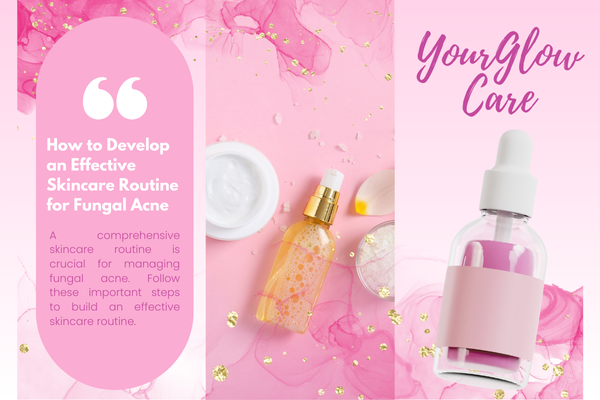
Best Budget-Friendly Products for Fungal Acne
Effective treatment for fungal acne skincare routine doesn’t have to cost a fortune. With the right products and consistent care, you can achieve clear, smooth skin without breaking the bank.
Here are some affordable, yet effective products that can help clear fungal acne:
1. Cleansers: Look for affordable options like Nizoral Anti-Dandruff Shampoo (which can double as a cleanser) or CeraVe Foaming Facial Cleanser.
2. Topical Treatments: Lotrimin or Selsun Blue are affordable antifungal options that can effectively treat fungal acne.
3. Exfoliators: Use budget-friendly exfoliating acids like The Ordinary Glycolic Acid or Paula’s Choice BHA Liquid Exfoliant.
4. Moisturizers: Neutrogena Hydro Boost Water Gel or Cetaphil Daily Hydrating Lotion are excellent choices for hydration without clogging pores.
5. Sunscreen: La Roche-Posay Anthelios Clear Skin Sunscreen or EltaMD UV Clear are both affordable options that are safe for sensitive skin.
Lifestyle Changes for Preventing Fungal Acne
Aside from using skincare products, there are lifestyle habits that can help prevent fungal acne from returning: maintaining a clean, dry environment, wearing breathable fabrics, and avoiding excessive sweating. These habits, along with a proper fungal acne skincare routine, can significantly improve your skin’s health.
There are lifestyle habits that can help prevent fungal acne from returning:
1. Wear Breathable Fabrics: Opt for clothes made from cotton or moisture-wicking materials to allow your skin to breathe.
2. Shower Immediately After Sweating: Always shower as soon as possible after working out to remove sweat from your skin.
3. Avoid Excessive Heat and Humidity: If possible, avoid prolonged exposure to humid environments that can encourage yeast overgrowth.
4. Stay Hydrated: Proper hydration keeps your skin healthy and balances oil production, which helps prevent fungal acne.
5. Stress Management: Reducing stress levels through meditation, yoga, or relaxation can reduce skin flare-ups.
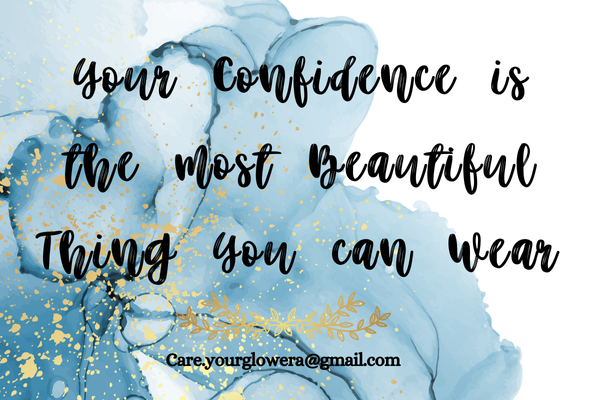
Conclusion:
Building a fungal acne skincare routine to treat fungal acne may seem challenging at first, but with the right knowledge and products, it’s entirely possible to achieve smooth, clear skin.
Be sure to use antifungal treatments such as Lotrimin or Selsun Blue in your fungal acne skincare routine, steer clear of heavy oils, exfoliate gently, and stick to a regular skincare routine for the best results.
By incorporating these steps into your daily life and making small lifestyle changes, you’ll be on the path to clearer skin in no time. Stay patient, and good luck on your fungal acne journey!
If you’re dealing with fungal acne and want to know the best way to clear your skin, “The Complete Guide to a Fungal Acne Skincare Routine That Actually Works“ is here to help. This detailed guide covers everything you need to know about effectively managing fungal acne, from understanding its causes to choosing the right products.
Whether you’re new to skincare or looking to refine your routine, a proper fungal acne skincare routine will provide you with the tools to achieve clear, healthy skin. Be sure to check it out and start your journey toward smoother, glowing skin today!
Frequently Asked Questions
1. Is fungal acne life long?
Fungal acne is not a lifelong condition. With proper treatment and care, fungal acne can be cleared up, although it may recur if the triggers are not addressed.
2. What to avoid with fungal acne?
Avoid skincare products with heavy oils, fatty alcohols, and other pore-clogging ingredients in your fungal acne skincare routine. Avoid tight clothing, excessive sweating, and conditions that promote yeast growth to help manage fungal acne effectively.
3. What kills fungal acne on face?
Topical antifungal treatments like ketoconazole, selenium sulfide, or clotrimazole are effective in a fungal acne skincare routine for killing the yeast responsible for fungal acne.
4. Should I exfoliate if I have fungal acne?
Yes, but use gentle exfoliation methods, such as chemical exfoliants (like salicylic acid), in your fungal acne skincare routine to avoid irritating the skin and worsening fungal acne.
5. Is turmeric good for fungal acne?
Turmeric may help with inflammation and healing, but it isn’t a proven antifungal treatment. Use it cautiously as it may cause irritation in some individuals.
6. Is salicylic acid ok for fungal acne?
Salicylic acid can help with regular acne by unclogging pores but doesn’t treat fungal acne directly. It’s not harmful, but fungal acne skincare routine with antifungal treatments is more effective.
7. Does niacinamide work on fungal acne?
Yes, niacinamide can reduce inflammation and regulate oil production, which can help improve the overall appearance of fungal acne-prone skin.
8. What skincare is good for fungal acne?
Look for antifungal cleansers, oil-free moisturizers, and gentle exfoliants. Ingredients like ketoconazole, zinc pyrithione, and niacinamide are great options.
9. How did I clear my fungal acne?
Consistent use of antifungal treatments, avoiding triggers, and keeping the skin moisturized and balanced helped clear fungal acne.
10. Which skin cream is best for fungal infection?
Creams containing antifungal agents like clotrimazole, ketoconazole, or miconazole are effective for fungal infections on the skin.
11. What is a fungal acne skincare routine and why is it important?
A fungal acne skincare routine is designed to treat and prevent fungal acne, a condition caused by an overgrowth of yeast on the skin. This routine helps to balance the skin, reduce yeast buildup, and achieve clear skin.
12. What are the best products for a fungal acne skincare routine?
Look for antifungal ingredients such as ketoconazole, zinc pyrithione, or sulfur, which can help treat fungal acne. Use gentle, non-comedogenic cleansers, lightweight moisturizers, and products that balance your skin without promoting yeast growth.
13. Can I use my regular acne products for fungal acne skincare routine?
While some acne products may work for fungal acne skincare routine, they are not always effective because fungal acne is caused by yeast. Use products specifically designed for fungal acne, as they contain ingredients that target yeast overgrowth, which regular acne treatments may not address.
14. How can lifestyle habits help prevent fungal acne from returning?
Aside from a proper fungal acne skincare routine, maintaining good hygiene, wearing breathable fabrics, and avoiding excess sweat can help prevent fungal acne. These lifestyle habits reduce the growth of yeast and keep your skin clear.
15. How can lifestyle habits help prevent fungal acne from returning?
Aside from a proper fungal acne skincare routine, maintaining good hygiene, wearing breathable fabrics, and avoiding excess sweat can help prevent fungal acne. These lifestyle habits reduce the growth of yeast and keep your skin clear.


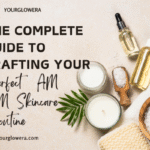
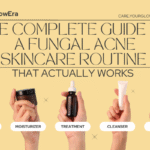



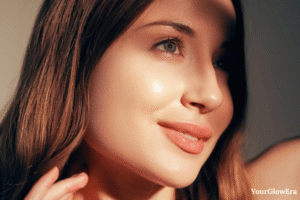
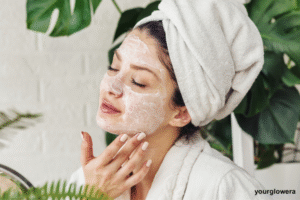
Leave a reply